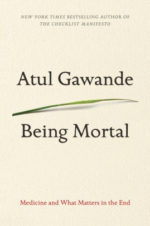4-26-13: Annotating the News
Posted on | April 26, 2013 | Comments Off on 4-26-13: Annotating the News
Capacity building as a precursor to testing
The L.A. Times has seen the elephant in the room. In a switch from its past obsession with test score accountability, the paper editorialized on Monday that we ought to be paying more attention to what students are supposed to be learning and particularly to the roll-out of the Common Core of standards, which is supposed to take place in 2014.
The promise of the Common Core to provide deeper learning and better testing will work only if a matching curriculum and testing system is in place and if teachers are trained. “[A]t the rate California is going, it won’t be ready,” the Times said, echoing my fears and an EdSource commentary by Arun Ramanathan
We need to build capacity before we rush to implement the Common Core and point fingers at those who, given the current preparedness, will surely stumble over its complexities. The Times said as much:
Experts are divided over the value of the new curriculum standards, which might or might not lead students to the deeper reading, reasoning and writing skills that were intended. But on this much they agree: The curriculum will fail if it isn’t carefully implemented with meaningful tests that are aligned with what the students are supposed to learn. Legislators and education leaders should be putting more emphasis on helping teachers get ready for common core and giving them a significant voice in how it is implemented. And if the state can’t get the right elements in place to do that by 2014, it would be better off delaying the new curriculum a couple of years and doing it right, rather than allowing common core to become yet another educational flash in the pan that never lives up to its promise.
There oughta be an immigration law!
A decade ago Samuel Huntington declared that the “Hispanic challenge” would threaten our historic values. Latinos, he asserted, were just too different to assimilate into the U.S. [A small aside: family historians found that our forebearers worshiped in German for at least the first 50 years after coming to America.] This week, a pair of dispatches suggested just how wrong he was about Latinos and immigrants in general.
In the New York Times, David Leonhardt reported on the remarkable progress of Latino immigrants, comparing first and second generations: College graduation up from 11% to 21% compared to 36% for the population at large; less than high school education down from 47% to 17%; median income up from $34.6 thousand to $48.4 thousand. James P. Smith at RAND calls Latinos “the new Italians,” like the immigrants from a century ago that arrived poor and undereducated. And like Italians, Latinos are rapidly intermarrying with other Americans: up from 7% in the first generation to 26% in the second.
Meanwhile, the Economist underscores the extent to which highly educated immigrants have pushed our economy. Forty percent of the high tech companies in California were started by immigrants, most famously, Google, whose co-founder Sergey Brin moved to the U.S. from Russia as a child.
Both stories underscore the necessity of an immigration law, not to be “nice” to immigrants, but to benefit the nation. As Leonhardt writes, illegal status “brings enormous disadvantages that inhibit climbing the economic ladder.” At the same time, current law allows only 250,000 foreign nationals with special skills into the country, less than one-tenth of a percent of the workforce, into the country annually. “America’s job-generating machine cannot run at full throttle for long if it is starved of fuel,” the Economist argues.
Of MOOCs and mentors
It’s hard to go through a day’s emails without seeing reference to Massive Open Online Courses. More than 5-million students have registered online for free or inexpensive courses run by Coursea, Udacity, or edX. But as A. J. Jacobs writes in the New York Times, you can forget about the Socratic method.
One may get the wisdom of first-rate professors, but you don’t get the professors. Jacobs signed up for 11 courses, and graded the whole experience with as a B, but personal interaction only got a D, writing: “Coursera and its competitors will have to figure out how to make teachers and teaching assistants more reachable. More like local pastors, less like deities on high.”
And that’s an important point. Teaching, both K-12 and college, has always been a bundled experience of instruction, assessment, and guidance. MOOCs, which are essentially a sophisticated broadcast media, may present very good lectures and ancillary material much more cheaply than conventional schools and colleges, but they’re not the medium to change young lives.
Although the two stories don’t reference one another, the same section of the N.Y. Times, carries a moving eulogy by writer Philip Roth for his high school teacher. Bob Lowenstein became a mentor and friend, a reader of Roth’s drafts and a writer of poetry. He also became a (slightly disguised) character in Roth’s book “I Married a Communist,” the subject of which, “is at bottom, education, tutelage, mentorship, in particular the education of an eager, earnest and impressionable adolescent in how to be come—as how well not to become—a bold and honorable and effective man.”
One may get great lectures, even great simulations from a MOOC, but they won’t grow you up. Nor will you go speak at a MOOC’s funeral.
Tags: Common Core > David Leonhardt > Economist > Immigration > L.A. Times > MOOC > N.Y. Times > Philip Roth





